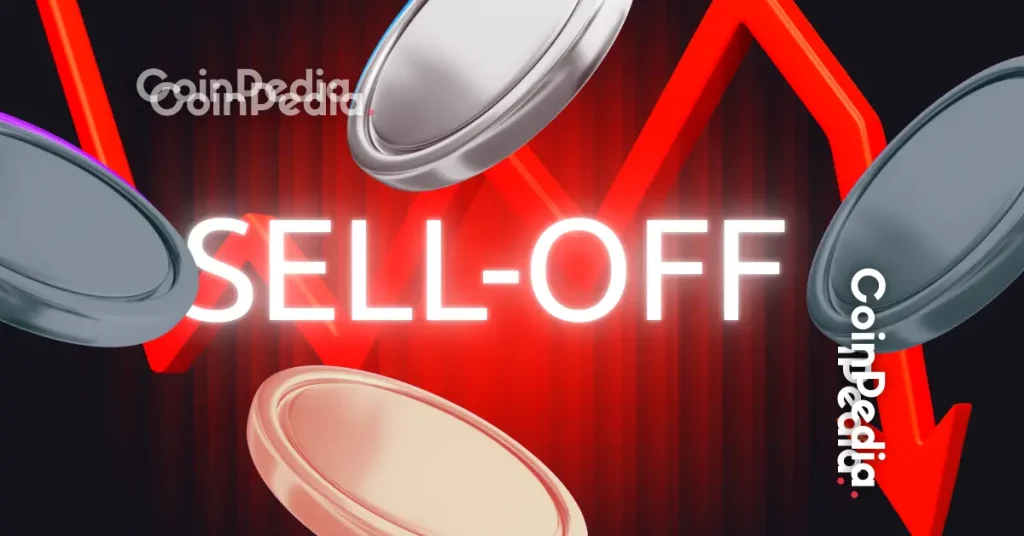
The post Is It the End Of Ethereum Merge Mania? What Next For ETH Price? appeared first on Coinpedia - Fintech & Cryptocurreny News Media| Crypto Guide
Recently, Ethereum ran its final dry run for the “merge.” The shift of its consensus mechanism is expected to make it faster and more energy-efficient. One of Ethereum’s test networks, called Goerli, simulated a process identical to what the main network will execute in September. Such Testnets allow the developers to experiment and make required changes before the updates are launched on the main blockchain.
A week ago, Ethereum (ETH) had been making the news given its escalation amidst the upgradation announcements. Ether soared to a two-month high after the developers successfully completed a final rehearsal for the pivotal upgradation set to happen next month.
However, now, the ETH price seems to be falling. After a strong rally over the last 45 days since the beginning of July 2022, the crypto market now seems to be seeing a deceleration again. The broader crypto market has been retreating for the fourth consecutive day, with the top two giants Bitcoin and Ethereum bearing the impact too.
ETH is currently trading at a price of $1,850 and a market cap of $225 billion. Since the beginning of July, ETH had managed to surge by almost 100% before beginning to retract at the start of this week.
This comes even as the asset has been surrounded with exceptionally positive bullish momentum because of the highly anticipated merger taking place next month.
Digital data scientist at Cowen Digital, David Kroger, said that the institutional investors are already gearing up for the Merge. In his conversation with Bloomberg, Kroger said, “Institutions have been asking us about the Merge, along with the technicalities and probabilities associated with it for several months now”.
Kroger added ‘Some players have been taking profits at the current levels. This could be the reason behind the recent price drop.’
Hype In The Crypto Space
About a month ago, the hype surrounding Ethereum’s Merge pushed its price up by 40%. While ether’s price was still down 75% from its November all-time high, investors were seen taking advantage of the market downturn by buying the dip ahead of it. Many predicted that Ethereum’s massive software update, scheduled around September 15, could significantly boost its value because it promises to make the network more efficient, faster, and cheaper to use.
Martin Hiesboeck, head of blockchain and crypto research at Uphold, said “While the price action of Ethereum certainly gives hope for the overall market to maybe turn a corner in the next few weeks, the sudden jump is mostly motivated by hype and perhaps a lack of understanding of what ‘The Merge’ will actually do.”
However, this excitement does not seem to be holding up too well.
Merge Excitement Fizzled Out?
Some detractors have been working to fork the Ethereum blockchain even after the constant support for the Merge coming in from the ETH community. The detractors are none other than the ETH Miners who are preferring to stick to the ongoing PoW mechanism of Ethereum.
Nevertheless, Ethereum co-founder Vitalik Buterin completely opposed the Miners’ moves. He explained that his team won’t be supporting the Ethereum PoW after the complete transition to the PoS model.
As the merger inches closer, market experts are keeping a watch over the developments. BitMEX CEO Arthur Hayes remarked that if the Merge doesn’t succeed, traders will be on a short spree for ETH.
Arthur wrote, “If the merge is not successful, there will be a negatively reflexive relationship between the price and the amount of currency deflation. Therefore, in this scenario, I believe traders will either go short or choose not to own ETH.”However, Arthur also explained that a successful Merge will take the Ethereum price even higher. He elaborated, “If the merge is successful… traders will buy ETH today, knowing that the higher the price goes, the more the network will be used and the more deflationary it will become, driving the price higher, causing the network to be used more, and so on and so forth.”

 3 years ago
163
3 years ago
163














 English (US) ·
English (US) ·